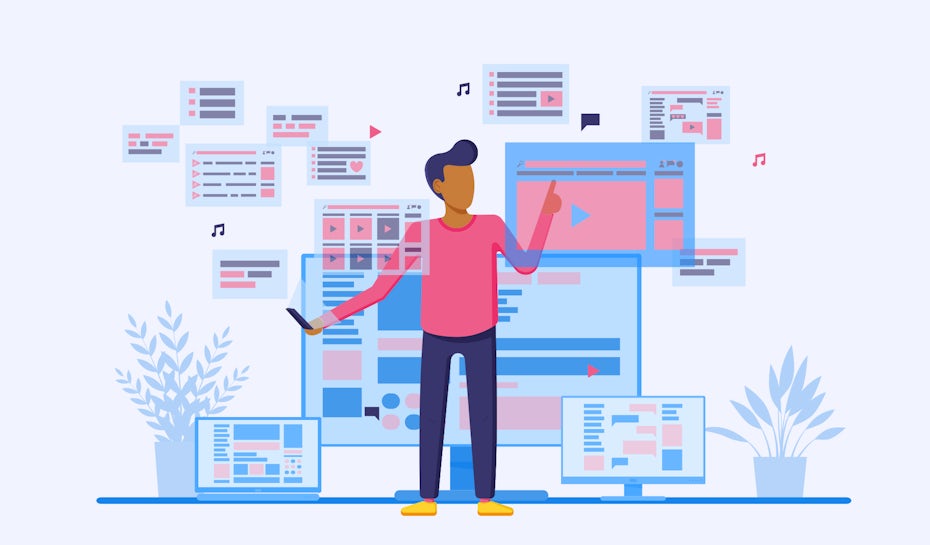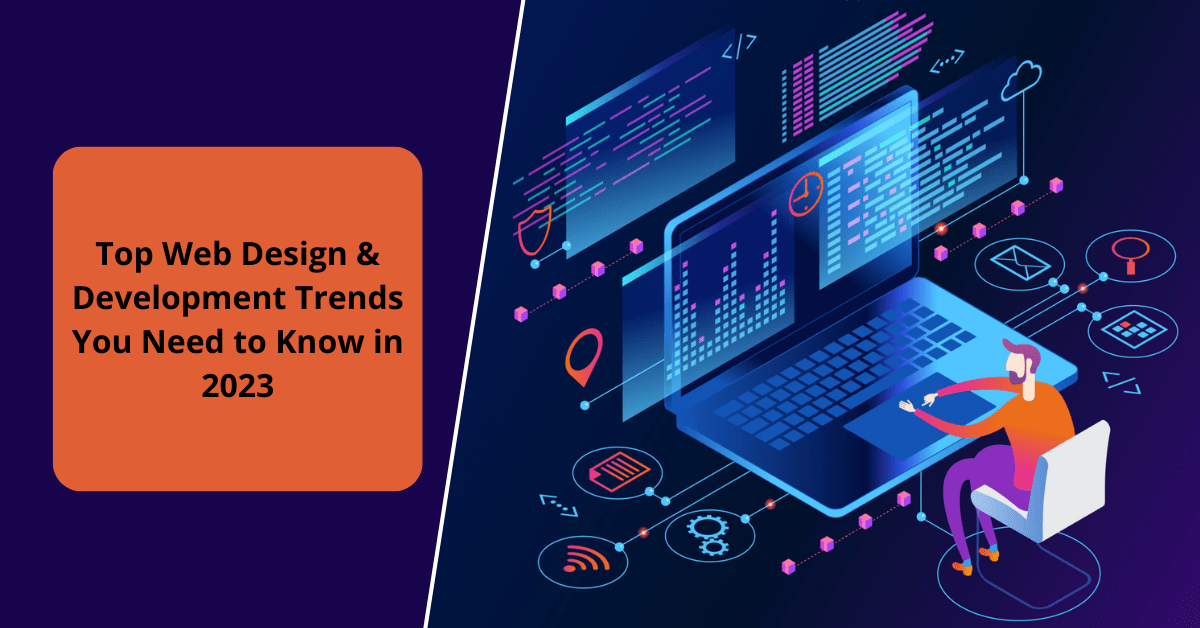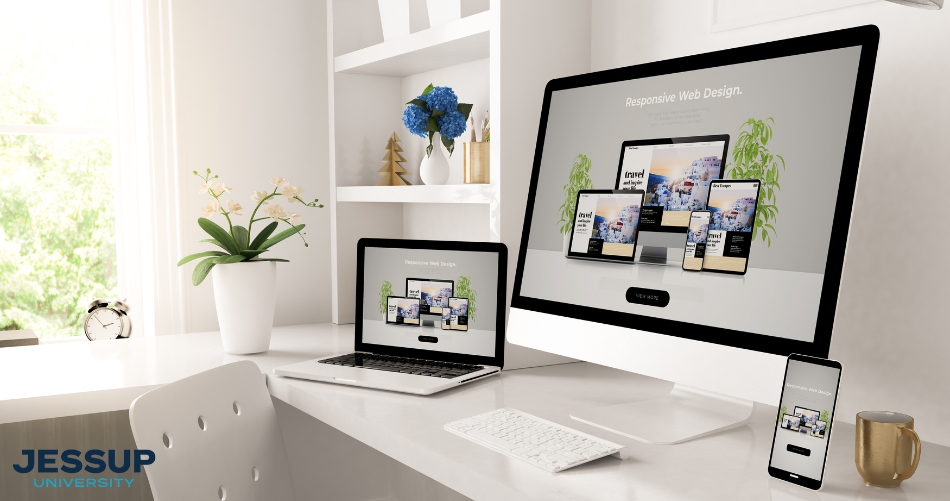How visual design in web design influences user engagement
Discovering the Different Sorts Of Website Design and Their Special Advantages
The landscape of Web design includes a selection of styles, each offering distinctive advantages that provide to different individual needs. Flat and minimalist styles emphasize clearness, while receptive and material styles enhance adaptability throughout gadgets. Typography-driven and illustratory strategies aim to increase engagement and psychological resonance. Comprehending these varied kinds can substantially influence user experience and brand name understanding. What exists below the surface of these design selections?
Minimalist Web Design

Minimal website design typically incorporates a minimal color combination and straightforward typography, which not just improves appearances but likewise strengthens brand identification. The reduced complexity can lead to much faster filling times, further improving customer satisfaction. Furthermore, by minimizing aesthetic mess, customers can engage with material extra successfully, causing boosted understanding and retention. In general, minimal Web style fosters a seamless customer experience, making it a popular selection for brands intending to share quality and professionalism and reliability in their on-line existence.
Responsive Web Style
Receptive Web style has actually become important in today's digital landscape, making sure mobile compatibility for customers across different devices. This technique substantially enhances user experience by providing smooth navigating and availability, despite display dimension. As more individuals access the Web on smart devices and tablet computers, the significance of responsive layout remains to expand.

Mobile Compatibility Relevance
As mobile phone use continues to increase, making sure internet sites work with various display sizes has ended up being necessary for reliable interaction and involvement. Mobile compatibility, usually achieved through receptive Web style, enables websites to adapt flawlessly to smart devices, tablet computers, and other gadgets. This adaptability not just gets to a broader audience yet likewise improves brand trustworthiness. A website that works well on mobile phones mirrors professionalism and trust and focus to customer needs. On top of that, internet search engine prioritize mobile-friendly websites in their positions, making compatibility a critical factor for online exposure. By spending in mobile compatibility, services can enhance their digital presence and deal with the growing variety of individuals who access info on the move. For that reason, prioritizing mobile-responsive layout is vital in today's digital landscape.
Improved Customer Experience

Flat Style
Level style is a minimal strategy to website design that stresses simplicity and quality. By getting rid of three-dimensional elements such as darkness, gradients, and appearances, flat design produces an aesthetically appealing interface that focuses on material and performance. This style advertises an instinctive navigation experience, as individuals can swiftly determine vital functions and actions without diversion.
Among the primary benefits of flat layout is its responsiveness throughout different devices and screen sizes. Its clean lines and uncomplicated formats adapt seamlessly, making certain a constant experience for customers on mobile, tablet, or desktop computer platforms. Furthermore, flat layout frequently incorporates bold colors and typography, boosting visual effect and brand recognition.
The simplicity intrinsic in level layout leads to faster filling times, which adds positively to customer fulfillment. Generally, flat design remains a preferred option for modern-day Web development, aligning with modern aesthetic preferences while delivering superb use
Product Style
Product Design stands for a design language established by Google that concentrates on creating a instinctive and cohesive user experience across digital platforms. This method emphasizes making use of grid-based layouts, responsive computer animations, and depth results such as illumination and darkness, which assist to develop a sense of pecking order and spatial partnerships. By imitating the real world, Material Design enables customers to interact with electronic user interfaces in an extra natural and appealing manner.
One of the vital advantages of Material Design is its versatility across numerous tools and screen sizes, guaranteeing a regular experience for users. In addition, it advertises a clear visual language that enhances usability, making it simpler for individuals to navigate complex applications. The incorporation of vibrant colors and strong typography additionally plays a crucial function in accentuating key elements, thereby enhancing overall individual interaction - website design. Material Style has actually ended up being a preferred selection amongst programmers seeking to create visually appealing and functional websites.
Typography-Driven Layout
Typography-Driven Style concentrates on the calculated use kind to improve the functional and aesthetic aspects of a site. This style technique prioritizes fonts, font dimensions, spacing, and power structure to produce visual rate of interest and overview user experience. By thoroughly picking typography, designers can share brand name identification and stimulate emotions, making the content more appealing and available.
Effective typography improves readability and functionality, ensuring that customers can quickly navigate the site and soak up details. The right mix of kind can also develop a clear visual power structure, enabling users to rapidly recognize vital messages and calls to activity.
A typography-driven technique can be adjusted to various tools, making sure consistency throughout systems. This versatility is crucial in today's multi-device landscape, where customer experience is critical. Ultimately, Typography-Driven Style serves not only a fantastic read as an artistic selection but likewise as a practical element that greatly influences a website's efficiency.
Illustrative Website Design
Illustrative website design uses aesthetic storytelling techniques that can considerably enhance individual interaction. By integrating one-of-a-kind images, sites can produce a memorable brand name identity that reverberates with their target market. This technique not just astounds site visitors however also connects messages in an aesthetically compelling manner.
Aesthetic Storytelling Strategies
A wide range of Web developers use visual storytelling techniques to produce immersive and engaging user experiences. This strategy combines design, images, and typography to tell a tale that reverberates with customers on an emotional degree. By integrating compelling visuals, developers can effectively communicate messages and stimulate sensations, directing site visitors with a brand name's trip. Infographics, animations, and interactive components serve to enhance stories, making complicated information more accessible and remarkable. Additionally, visual narration can develop a natural brand name identity, as consistent imagery and themes enhance core worths and messages. Ultimately, this technique not only astounds individuals yet likewise promotes a deeper connection with the material, motivating exploration Visit This Link and retention. With skilled application, visual narration transforms standard Web experiences right into purposeful and vibrant interactions.
Enhancing User Involvement
Effective website design significantly enhances user engagement by leveraging illustrative components that draw interest and foster communication. Pictures can simplify complicated ideas, making them extra remarkable and approachable for users. They break the uniformity of text-heavy pages, producing visual breaks that welcome expedition. In enhancement, special illustrations can evoke feelings, encouraging individuals to get in touch with the material on a much deeper degree. Interactive components, such as animations or float effects, can additionally boost interaction by welcoming customers to take part proactively instead of passively consuming details. This strategy not just keeps visitors on the website much longer but additionally enhances the possibility of return visits. Inevitably, reliable illustrative Web design transforms the user experience, making it a lot more impactful and satisfying.
Branding With Picture
Aesthetic components play a considerable duty fit a brand's identity, and pictures are a powerful tool in this respect. Illustrative Web layout allows brand names to share their one-of-a-kind personality and values through custom-made artwork. This method promotes a much deeper emotional connection navigate to this site with the target market, improving memorability and involvement. By integrating pictures, brands can differentiate themselves in a congested marketplace, developing a distinctive aesthetic narrative that resonates with their target market. Furthermore, illustrations can make and simplify complex concepts content extra accessible, efficiently connecting messages in an engaging way. On the whole, branding through picture not only enhances the user experience yet likewise strengthens brand name recognition, making it a beneficial method for organizations intending to develop a strong on-line existence.
Often Asked Concerns
Exactly how Do I Select the Right Website Design Type for My Service?
To choose the best Web style kind for a business, one need to assess goals, target audience, and market requirements. Assessing customer experience and functionality will certainly assist the choice procedure for suitable engagement and efficiency.
What Devices Are Finest for Developing Different Website Design Designs?
Popular devices for developing diverse Web style styles consist of Adobe XD, Figma, Lay Out, and WordPress. Each deals distinct attributes tailored to various style needs, making it possible for designers to construct aesthetically attractive and functional web sites successfully.
Just How Much Does Expert Web Style Generally Price?
Specialist website design generally sets you back in between $2,000 and $10,000, depending on complexity, functions, and developer proficiency. Customized remedies and recurring maintenance may raise costs, while themes can supply even more economical options for simpler jobs.
Can I Incorporate Numerous Website Design Enters Efficiently?
Yes, combining several website design types can be reliable. By incorporating components from numerous designs, developers can develop special, interesting customer experiences that deal with diverse target markets while boosting performance and visual charm.
Exactly How Do Style Trends Impact User Experience and Involvement?
Design fads greatly influence customer experience and involvement by enhancing visual charm, boosting navigating, and fostering psychological links - website development. Remaining upgraded with fads enables developers to create instinctive user interfaces that reverberate with customers and encourage prolonged communications
Level and minimalist designs highlight clarity, while receptive and worldly designs improve versatility across tools. It may appear counterintuitive, minimal Web design emphasizes simpleness to boost user experience. Receptive Web layout plays a necessary function in boosting individual experience by making certain that a website adapts effortlessly to various display sizes and tools. Flat style is a minimal approach to Web design that emphasizes simplicity and clarity. Product Style represents a style language developed by Google that focuses on producing a natural and instinctive user experience across digital platforms.